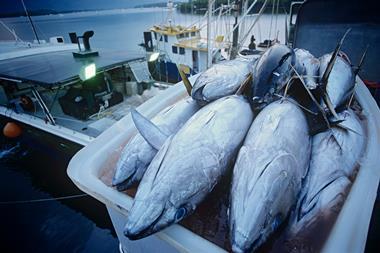Pilchard ban looms
Another complete ban on pilchard fishing by the Namibian government is possible. With this season's fishing only a few weeks away, tests have shown fewer than normal shoals in three key areas.
Six years ago, Namibia banned all pilchard fishing due to poor fish availability and the need to conserve stocks for future years.
Last year, there was a quota but it was down by 50% compared with the previous season, thus demonstrating the ongoing commitment by the authorities to manage the dwindling reserves.
South Africa is enjoying good fishing but with domestic demand running at more than six million cases, there is a heavy dependency on product from Namibia to support the market.
UK demand is running at 600,000 cases and there appear to have been reasonable stocks of all size, except a couple of minor brine packs. UK traders have been paying a premium to get replacement stocks from South Africa and Morocco.
In the event of a total Namibian ban, there is the possibility of shortages later in the year. This was the view of one importer who told The Grocer: "The major South African brands will always want to safeguard their own market, having invested heavily on advertising and promotional deals in previous years."
Peru, another source of pilchards, is threatened by the return of the infamous El Niño current, which could spell disaster for its industry as it did a few years ago.
Marine biologists have strong evidence of abnormal temperatures, similar to those of the last El Niño year.
{{CANNED GOODS }}
Close menu
- Home
- Buying & Supplying
- Stores
- Channels
- Finance
- People
- Reports
- Events
- Jobs
- Subscribe now
canned FISH
2001-09-29T00:00:00+01:00
Sign in to comment on this article
Not logged in before? Register for FREE guest access today.
You will be able to:
- Read more stories
- Receive daily newsletters
- Comment on stories
Advert








No comments yet